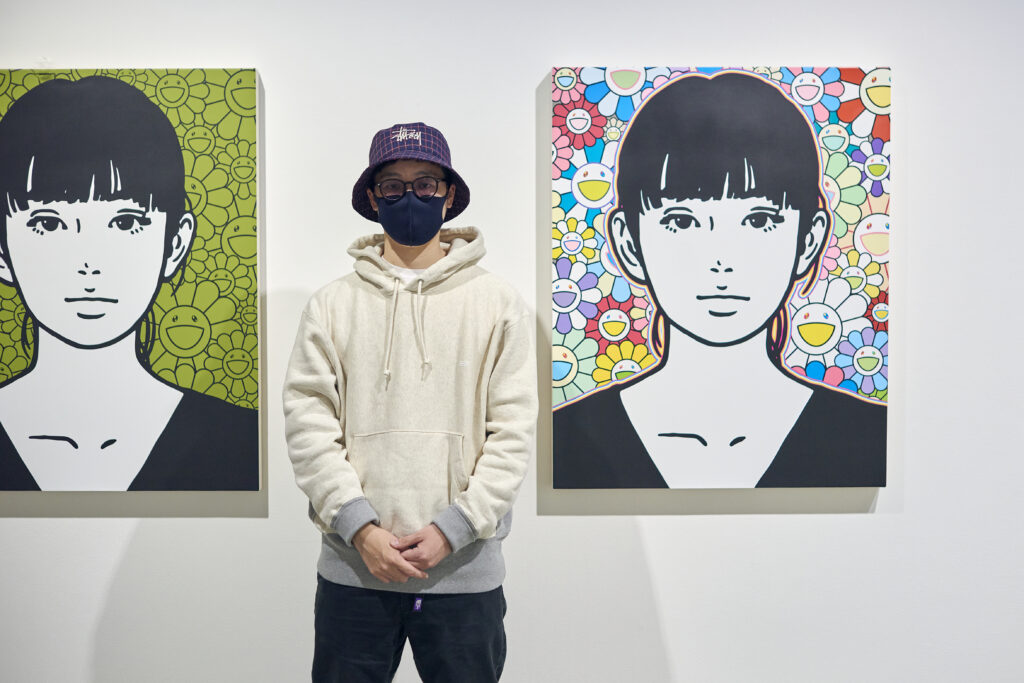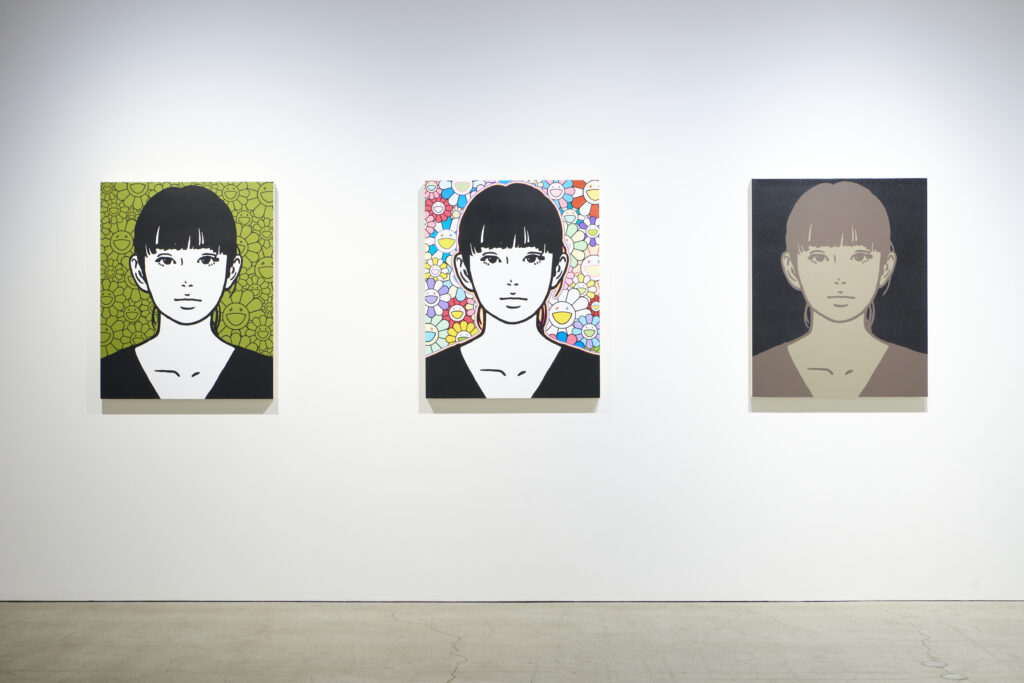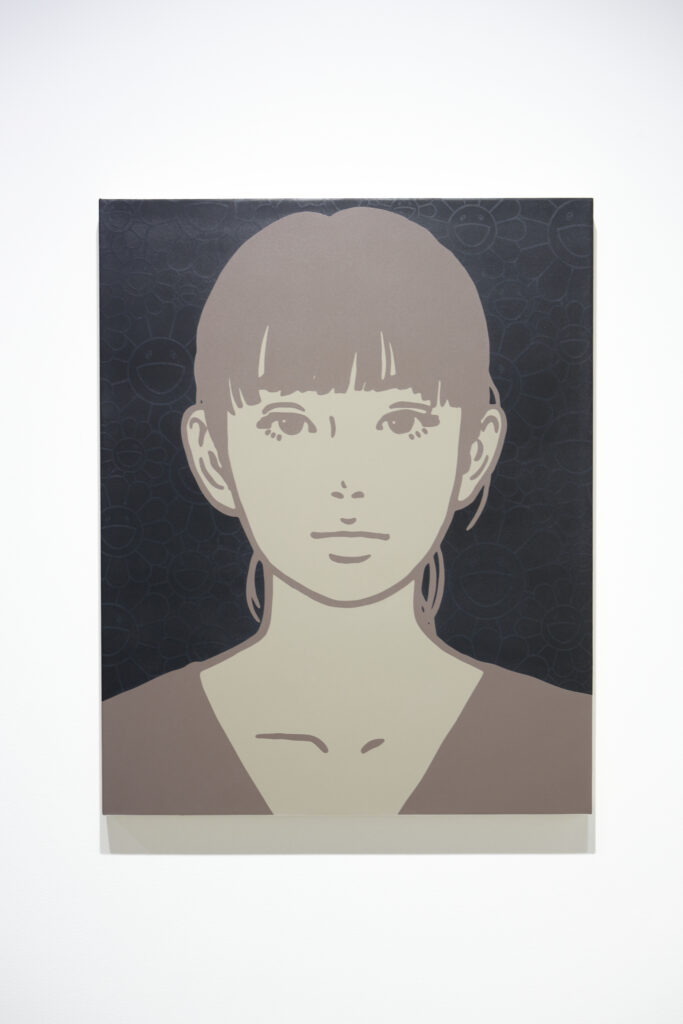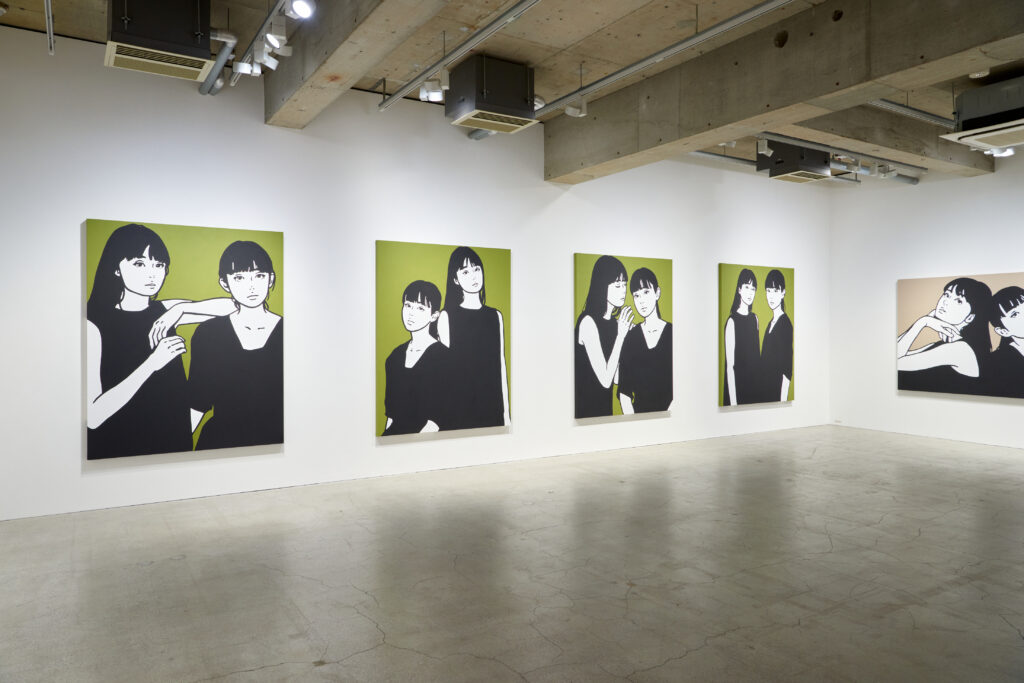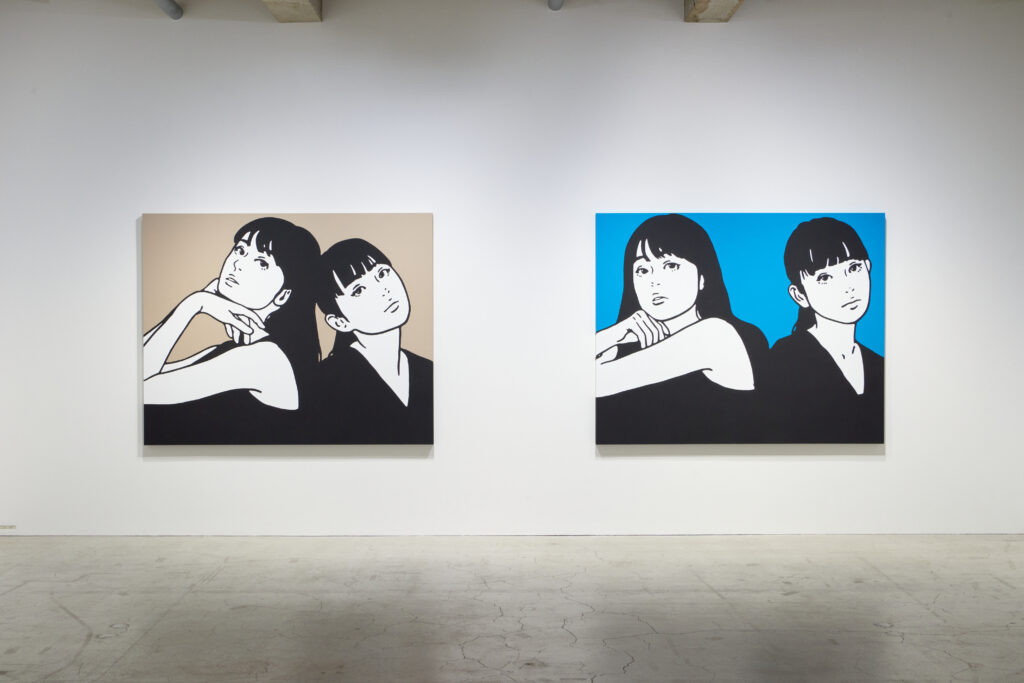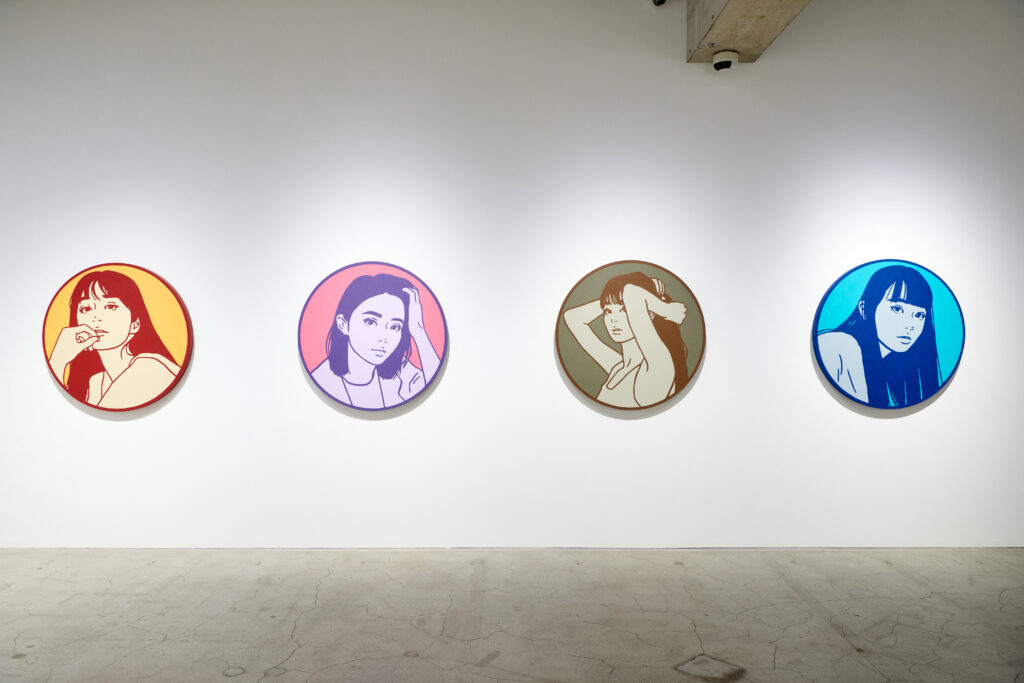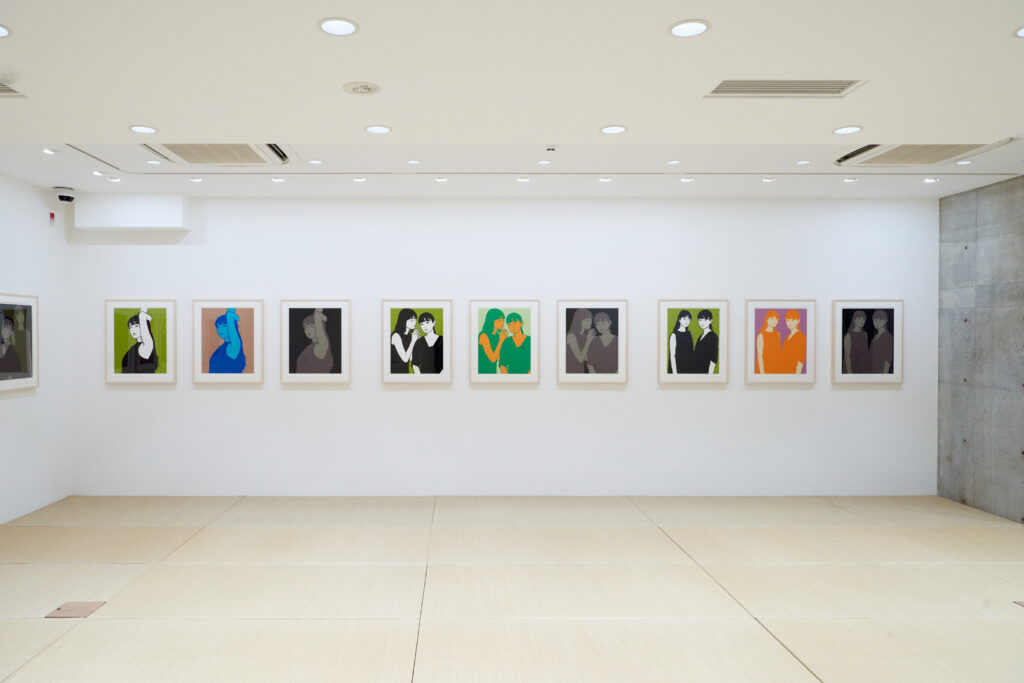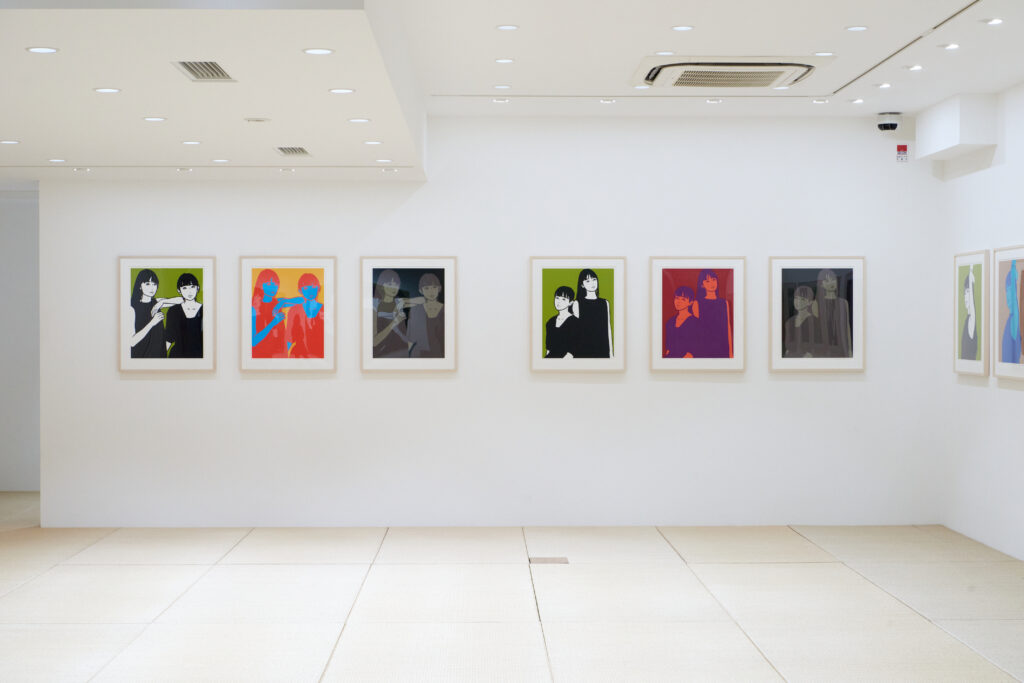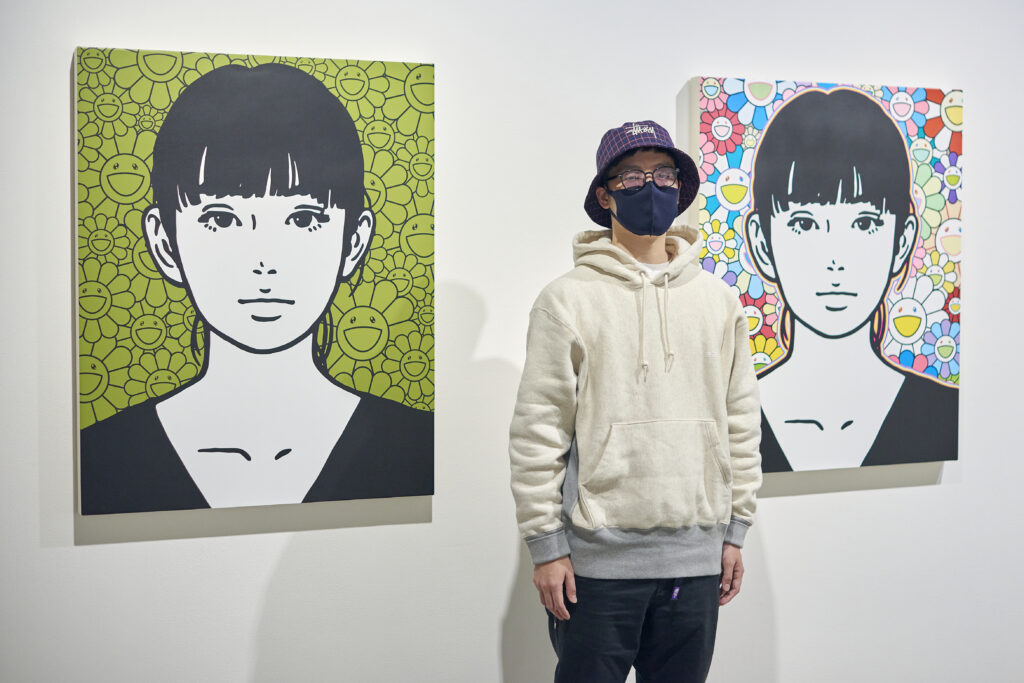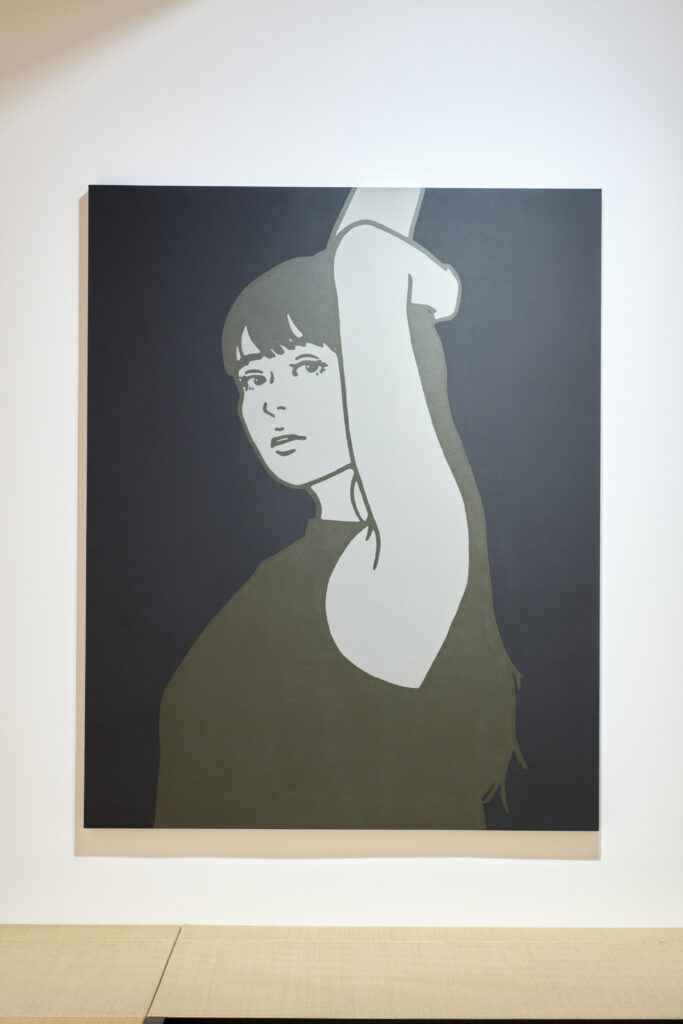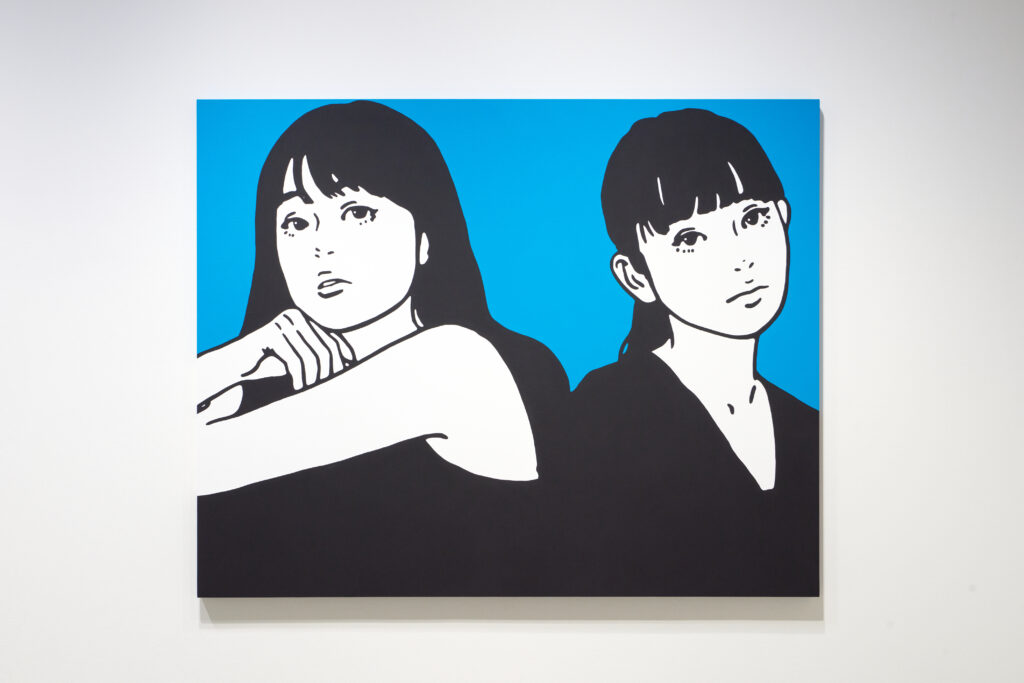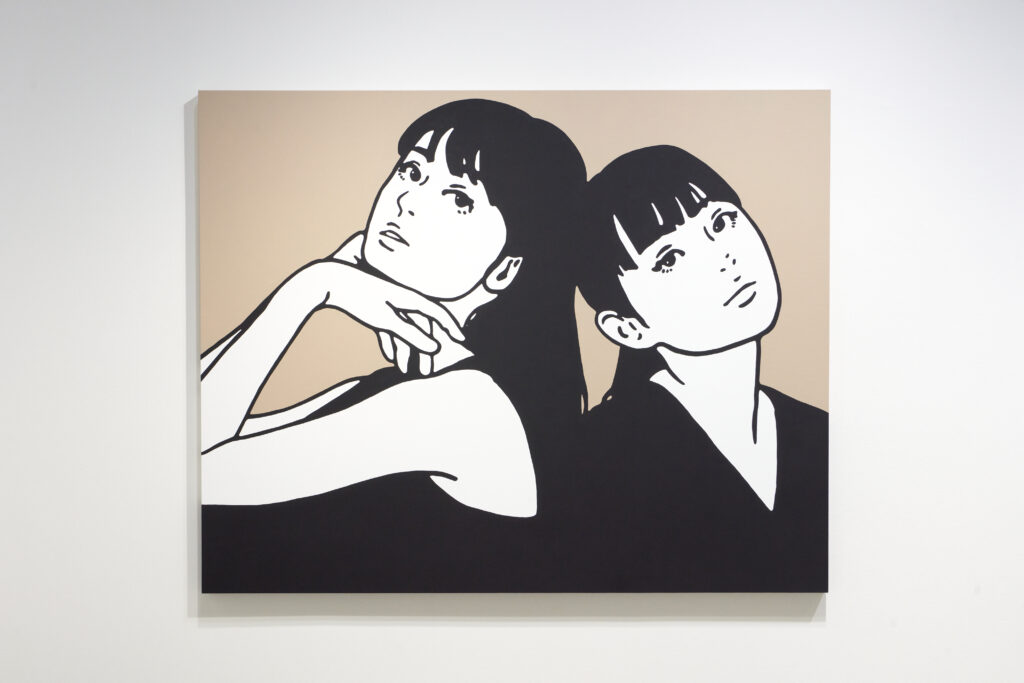A solo exhibition “KYNE Kaikai Kiki” of Fukuoka-based artist KYNE is being held at “Kaikai Kiki Gallery” in Tokyo until April 28th.
KYNE’s work, a seemingly pop illustration of female figure, reflects the influence of “Japanese painting,” “Graffiti,” “pop culture in the 1980s,” and “modern mixed culture” are reflected. “All these seemingly unrelated elements are essential to the presentation of my work,” says the artist.
At this exhibition, he also unveiled collaborative works with Takashi Murakami. It may be no exaggeration to say that the works by two high-profile artists truly represent the Japanese art scene today. We talked to KYNE at the time of his solo exhibition about how he had come to the collaboration with Murakami.
The grandeur of Takashi Murakami witnessed in the co-production
——First of all, please tell us how you decided to hold a solo exhibition at “Kaikai Kiki Gallery” this time.
KYNE: At first, I met Murakami at “Tonari no Zingaro” (hereinafter “Zingaro”) in Nakano, Tokyo, introduced by Takashi Ishida of the select shop “Cherry” in Fukuoka. Later on, Murakami asked me if I would like to sell my work at “Zingaro”, so I spoke to the “Gallery Target” by which I am represented. Considering affinity of my works for Murakami, we decided to work together. Since then, we started to discuss how we would showcase the work.
That was around 2019, and we had initially been thinking of having an exhibition at “Zingaro” in March 2020, which was cancelled due to the coronavirus pandemic. After that, when I had a solo exhibition at “SAI” in Miyashita Park in July last year, I talked with Murakami again and made a fresh start.
After the exhibition at “SAI”, Murakami suggested that I work on prints. In response, I told Murakami that I would like to work on a new series which will be released for several consecutive months and to hold a solo exhibition at the time of releasing the last ones. And the result is this exhibition.
——Collaborative works with Murakami are also on view in this exhibition.
KYNE: Yeah, you’re right. I told Murakami that I would like to collaborate with him for the prints I would publish every month. And the idea was approved. So, from November 2020, we released 3 different prints every month, ending up with this series of collaborative works shown in this solo exhibition.
What actually we have done was to decide the motif at this end and then select one of the backgrounds for the motif from what were suggested by Murakami.
——What is your impression of Murakami?
KYNE: Until I first met, I was actually scared of him because of his stoic and severe comments in the media (laughs). But when I met him in person, he treated the like of me with respect. As Murakami himself says, he tends to be perceived as a kind of “money-seeker”, but when I went to his studio, I found him to be a person with an extraordinary vision for the future who is very enthusiastic about creation. In the process of collaboration, I realized again that he is a Japan’s leading artist.
——Apart from the collaborative works, what do you showcase in the exhibition?
KYNE: There are 5 paintings which depict the same motifs that I previously worked on with prints, 6 new works, and the rests are prints that have been released so far.
Various cultures inherent in the works
——You still live in Fukuoka, and you have a base called “On Air” in Tokyo. Are you creating works in Fukuoka?
KYNE: That’s right. I don’t produce anything at all in Tokyo. Various events and exhibitions are held at the same time in Tokyo, which is very inspiring. However, when it comes to creation, I don’t think I can devote myself to it in Tokyo, so it’s better to do it in Fukuoka.
——You have made comments in a number of interviews on the influence of popular culture such as idols, music, and culture in the 1980s. How did you come across that?
KYNE: It was triggered by Kishidan, a Japanese rock band I met when I was in junior high school. Their lyrics and CD jackets are full of homages to many different 80’s cultures. And I enjoyed discovering the originals from which these homages came. From there, I came to be exposed to various cultures of the 1980s.
——Is there anyone in particular influenced you?
KYNE: I cannot raise specific name because I’ve seen a lot which somehow constitute one collective image for me. I also like to collect records, and I tend to listen to wide variety of artists rather than focusing on a specific one.
——Had you also been influenced by the culture after 80’s, such as ’90s and ’00s?
KYNE: That’s right. In the 90’s, I was strongly influenced by street culture such as graffiti. Before I came to know hip-hop well, I had met graffiti and drawn ones by myself. While always having interest in cultures from the 80’s, I was also developing an interest in street culture.
——While influenced by such street culture, it is surprising that you majored in Nihonga (Japanese style painting) at university.
KYNE: I have been studying art since high school, where I did everything from drawing to oil painting, sculpture, ceramics, dyeing, and design. I had always liked drawing figures since then, but some of my classmates who were very good at it made me realize that I wasn’t fit for oil painting. So at university, I majored in Nihonga, thinking that I should do something that I had never done before. That was the time when artists from the field of Nihonga such as Takashi Murakami and Fuyuko Matsui, and artists with Japanese subjects such as Makoto Aida and Akira Yamaguchi were gaining prominent attention.
While studying Nihonga at university, I kept working on graffiti along with it. As for graffiti, I sometimes drew portraits when drawing in the place where I could put enough time into it. But I was thinking it would be great if I could show my own style more in the street.
After graduating from university, I came to focus on acrylic painting instead of Nihonga, and I started drawing portraits. However, I was not interested in realistic painting because they are just like photographs and I thought if I drew something with lines just as I did for Nihonga would bring out more of my characteristics. That’s how my style now has been formed.
——In the statement you made for this exhibition, you said “the portrait of the girls I am currently working on are not imagery of ’80s idols imbued with the essence I absorbed from Nihonga and graffiti, but rather depiction or personification of various cultures and moods I have experienced personally.” So does it mean that drawing women is not your primal focus?
KYNE: When working on portraits, I’m thinking of depicting the coolness embedded in myself, rather than “drawing a woman like this.” So my painting reflects various factors that have influenced me. It feels like these elements are expressed through a female motif.
——Now you are drawing female images, but are you thinking of working on the imagery of a male figure or the other motifs in the future?
KYNE: Well, I don’t know. I haven’t thought about that much, but I would to love to, if I can draw something I’m satisfied with.
——Finally, tell us what you want to do in the future.
KYNE: I would like to try large-sized works and three-dimensional works. Also, since most of my works are for sale, I am also interested in public art that are not intended to be individually owned.

KYNE
Started his career as an artist in his hometown Fukuoka from around 2006. He established his current style around 2010 through his works depicting cool female figure, and draws attention for his unique artistic style inspired by the 80’s culture. Recently he has exhibited a huge mural painting at Fukuoka Art Museum. As an important artist in the contemporary art scene, KYNE is receiving strong acclaim both domestically and internationally.
http://kyne.jp
Instagram:@route3boy
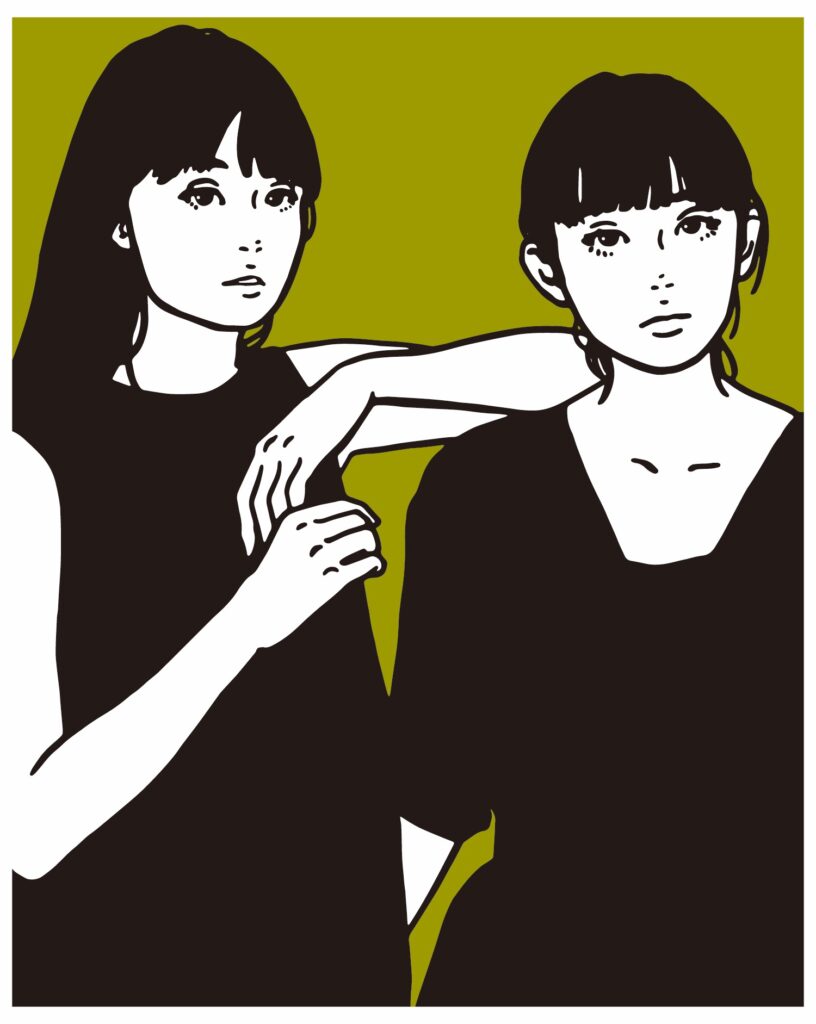
“KYNE KAIKAI KIKI”
Date: April 9-28, 2021
Venue: Kaikai Kiki Gallery
Address: 2-3-30 Motoazabu, Minato-ku, Tokyo Motoazabu Crest Building B1F
Hours: 11: 00-19: 00
Holidays: Sundays, Mondays, public holidays
Admission: Free
http://gallery-kaikaikiki.com
©️KYNE
Photography Yohei Kichiraku
Translation Shinichiro Sato

